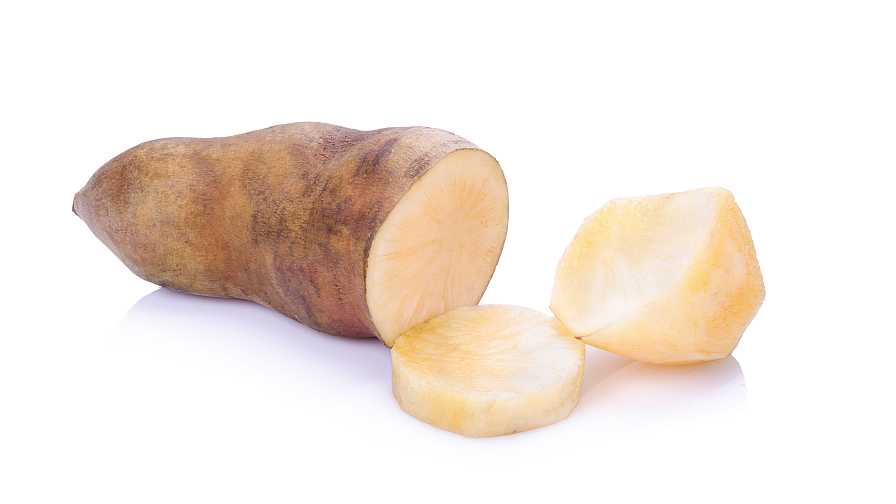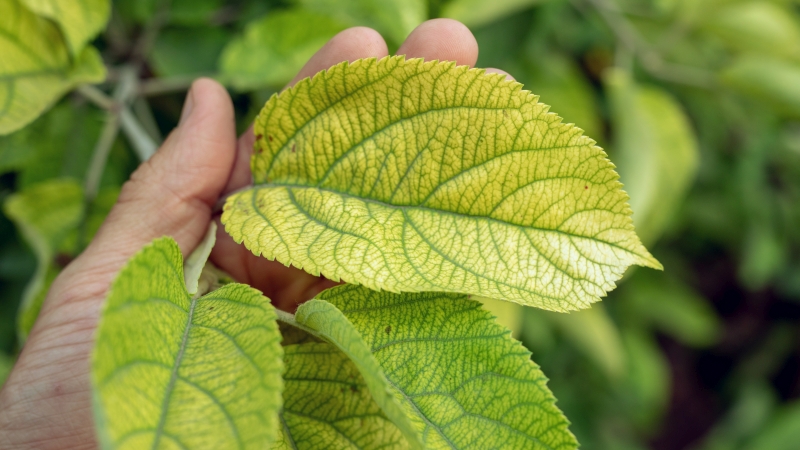Look Before Jumping into a New Vegetable Crop

Don’t forget to make sure you have a market for a new crop before growing it. Despite some national attention, yacon (shown here) didn’t have a market when a few growers introduced it in New Jersey.
When growers consider adding a new crop to their seasonal plans, one important question tends to get overlooked. Who actually buys and consumes that produce?
We chance upon a new produce item in a grocery store, or see/read a story about some new crop that’s all the rage, and suddenly we’re trying to see if our growers can add it to their crop mix, assuming it will be highly profitable, with such high prices on the market shelves and all that publicity.
Take for instance, yacon (Smallanthus sonchifolius) or Peruvian ground apple, a South American plant grown for its sweet-tasting tuber.
My colleague Peter Nitzsche, Morris County (NJ) Agricultural Agent, read some news about it being popular among Central/South American immigrants, as well as having some health benefits being touted on daytime television talk shows.
Our research, by chance, showed we could grow it adequately on white plastic, but not black, in our South Jersey hot, dry, sandy soils, and that it produces prolifically in our cooler, heavier soils in the northern part of the state. Costs of production looked good, and Pete worked with the Food Science Department to do some taste evaluations and recipe development.
What we didn’t find were any enthusiastic immigrant communities clamoring for it. And apparently, few health/foodie consumers who frequent farmers markets had heard the news about its healthy prebiotic qualities.
The handful of farmers who experimented with us ended up with a lot of leftovers at the end of the season.
Useful Market Research Tools
There have been a few tools created to help determine market potential for new crops, especially if they happen to be popular in recent immigrant communities.
The WorldCrops website was created specifically to help growers learn about and understand those cultures and the types of produce they might seek.
Researchers are conducting additional work to link those crops with census data. That includes highlighting the ethnic makeup of the communities around your market. We’ve piloted this for New Jersey and may expand it if successful. You can find more information on this at SARE.Rutgers.edu/market-research.html.
Similarly, the national Market Maker system, which is available in states that have subscribed to the service, helps you identify potential buyers of specialty crops and livestock products.
Check into Crop Prices
High retail prices for new types of produce don’t necessarily translate into high prices to the grower either. What makes prices for new produce so expensive? A range of things. Such as novelty crops, short shelf life, special handling requirements, and small supplies available only from a few growers/wholesalers for a short period.
In some cases, there is so much unmet demand that there’s lots of room to jump on an opportunity. However, flooding a tiny niche market with a large, new supply is often self-defeating with the market being unable to absorb any more volume, no matter how low the price drops.
Keep in mind that a new crop alternative that looks like a lucrative opportunity is likely already a staple crop for other growers somewhere.
Where to Find Production Tips
Once you’ve decided you want to try a new crop, you have a wealth of production resources to tap into.
Check with your local and state extension offices, USDA programs, and grower organizations. You’ll find how-to production guides and descriptions for new, unusual, and alternative crops. These support materials will help you learn how to grow them.
Many researchers and Extension advisers have tested varieties, fertility and seeding rates, and other production traits to see if a new crop will grow in their locale. Collaborating with colleagues in the Ag Economics departments, we try to determine costs of production to see if the crop can be grown profitably.
Here are a few good places to start:
Resources for Learning About New and Alternative Vegetable Crops
Along with your state’s vegetable production guide, the following sites offer a wealth of well-researched information about alternative crops.
USDA Sustainable Ag Research and Education program
UKy Center for Crop Diversification
ATTRA – Sustainable Agriculture Program
Books
“World Vegetables: Principles, Production, and Nutritive Values, 2nd Ed. 1997.”
Rubatzky, V. E. and M. Yamaguchi.
“New Crops and Progress in New Crops: New Opportunities, New Technologies”
Janick, J. and J. E. Simon, editors.










